1. Laika (1957): The First Orbital Traveler
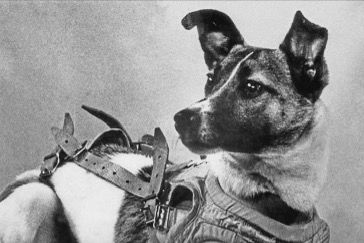
Laika, a mixed-breed stray from the streets of Moscow, became the first living creature to orbit Earth aboard the Sputnik 2 spacecraft. Her mission, launched on November 3, 1957, was a one-way trip, as the technology for safe reentry had not yet been developed. While Laika tragically did not survive past the first few hours due to overheating, her sacrifice was scientifically invaluable. She proved that a living being could endure the rigors of a rocket launch and survive the conditions of weightlessness in orbit. Her flight gave Soviet scientists the confidence to accelerate the human space program, directly setting the stage for Yuri Gagarin’s historic journey four years later. Laika remains a global symbol of courage, honored today with statues and memorials.
2. Tsygan and Dezik (1951): The Suborbital Survivors
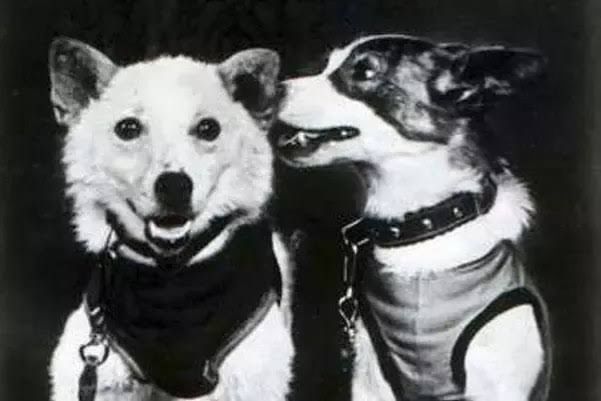
Before the orbital attempts, Tsygan (Gypsy) and Dezik (Daisey) made history by becoming the first dogs to be successfully launched into space and returned safely to Earth. Aboard an R-1 series rocket on July 22, 1951, they reached a suborbital altitude of about 100 kilometers, technically crossing the Kármán line, which is internationally recognized as the edge of space. The two canines parachuted back to the ground unharmed, proving that both the intense G-forces of launch and the subsequent parachute-aided reentry could be survivable for living organisms. Their groundbreaking flight gave Soviet engineers the crucial preliminary data and confidence needed to continue canine testing and develop the safety protocols for human space travel.
3. Lisa and Ryzhik (1951): A Tragic Test for Safety

Lisa and Ryzhik were part of the early series of suborbital flights launched later in 1951, designed primarily to test the reliability of parachute reentry systems. Tragically, their parachutes failed to deploy correctly during the return phase, and neither dog survived the impact. While their mission ended in loss, it was a pivotal moment for the burgeoning space program. The failure provided crucial, life-saving data about the flaws in the early capsule design and the recovery mechanisms. Engineers used this information to significantly refine and strengthen the reentry systems, which proved vital in ensuring the survival of future space dogs and, ultimately, the first human cosmonauts. Their sacrifice directly led to safer systems.
4. Albina (1957): Laika’s Veteran Understudy

Albina was a crucial, yet less famous, canine pioneer who served as Laika’s immediate understudy for the historic Sputnik 2 mission. Already a veteran, she had successfully completed two high-altitude suborbital flights, providing extensive physiological data on a living creature’s response to G-forces and weightlessness. Because of her experience and demonstrated resilience, and also because she was considered a highly valuable subject for future breeding programs, the scientists chose not to send her on the known one-way orbital mission. Instead, the less-vetted Laika took the fatal flight. Albina’s pre-flight data was essential in modeling Laika’s vital signs and giving scientists the green light to attempt the complex orbital launch.
5. Belka and Strelka (1960): The Global Celebrities

Belka (Squirrel) and Strelka (Little Arrow) achieved a massive breakthrough by becoming the first dogs to orbit Earth and return alive. Launched aboard Sputnik 5 in August 1960, they completed a total of 17 orbits, sharing their capsule with 42 mice, two rats, a rabbit, and numerous fruit flies and plants. Their successful and safe return was a global sensation, proving that complex, extended orbital spaceflight was not a death sentence. Strelka later gave birth to a litter of six puppies, and one, Pushinka, was famously gifted by Soviet Premier Nikita Khrushchev to U.S. President John F. Kennedy’s daughter, Caroline, becoming a symbol of Cold War-era friendship.
6. Pchyolka and Mushka (1960): The Self-Destruct Mission
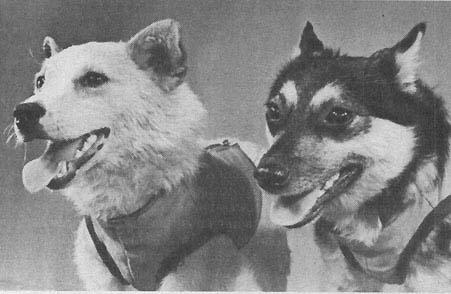
Pchyolka (Little Bee) and Mushka (Little Fly) were launched on a one-day orbital flight aboard Sputnik 6 in December 1960, testing new capsule designs and life support systems. Their mission provided valuable data on radiation exposure and extended orbital mechanics. However, tragedy struck during the reentry phase. Due to a malfunction in the guidance system, the vehicle was returning off-course, which risked dropping secret Soviet technology into foreign territory. Following protocol, the self-destruct mechanism was intentionally triggered to destroy the capsule, resulting in the loss of both dogs. Their mission underscored the dangerous, high-stakes nature of rocketry during the space race, though their data was incorporated into future, safer designs.
7. Damka and Krasavka (1960): A Miracle in the Snow

Damka (Little Lady) and Krasavka (Beauty) were scheduled for an orbital test in December 1960, but their flight was nearly a complete disaster. The R-7 rocket experienced a failure, causing the mission to abort prematurely. By a stroke of luck, the escape system successfully deployed, ejecting the capsule at a high altitude and allowing it to parachute into the remote, sub-zero wilderness of Siberia. After two days of anxious waiting, a rescue team located the capsule, and both dogs were found alive, if freezing. Their survival against the odds—a near-fatal launch failure followed by an emergency landing in extreme cold—was celebrated as a miracle and a true test of the capsule’s resilience.
8. Chernushka (1961): The Dress Rehearsal

Chernushka, meaning “Blackie,” flew a crucial single-orbit mission in March 1961 aboard Sputnik 9, serving as the final, critical dress rehearsal for Yuri Gagarin’s impending human flight. She flew with a life-sized mannequin, which was successfully ejected from the capsule at altitude to test the cosmonaut’s planned egress system, along with various biological specimens. Her successful orbit and safe return proved beyond a doubt that the capsule’s life-support, propulsion, and recovery systems were all fully functional and ready for a human pilot. Though her role was soon overshadowed by Gagarin’s fame, Chernushka’s flawless flight provided the final, necessary confirmation for the world’s first manned mission.
9. Zvezdochka (1961): The Little Star of History
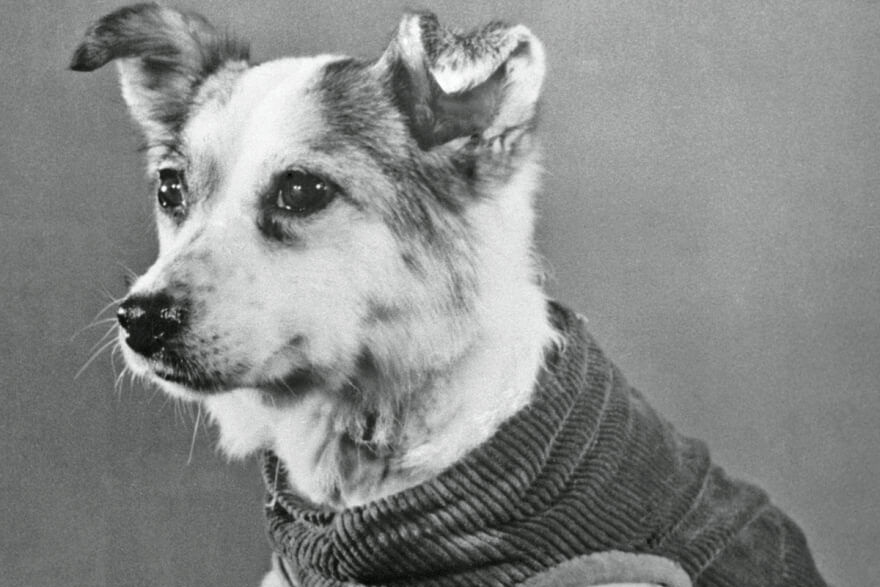
Zvezdochka, or “Little Star,” was the final dog to fly into space before a human cosmonaut. Her single-orbit mission aboard Sputnik 10 took place on March 25, 1961, just 18 days before Yuri Gagarin’s historic flight. Like Chernushka before her, Zvezdochka flew with a mannequin and other scientific specimens, successfully testing all phases of a human-rated mission, from launch to orbit to reentry and landing. She was recovered safely after her flight, providing the ultimate, non-negotiable proof that the Soviet Vostok spacecraft was safe enough to carry a person. Her safe return cemented the decision to proceed with the world-changing launch, forever linking the little dog to the birth of human spaceflight.
10. Ugolyok and Veterok (1966): The Endurance Record
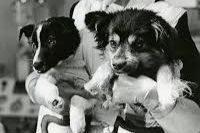
Ugolyok (Coal) and Veterok (Light Breeze) made history by setting an astonishing endurance record for canine spaceflight. Launched aboard Cosmos 110 in February 1966, the two dogs spent 22 full days in orbit. This mission was specifically designed to test the effects of long-term weightlessness, radiation, and prolonged confinement within a life-support system. Both dogs returned safely, though visibly fatigued and suffering from weight loss and severe dehydration. Their flight provided indispensable data for long-duration manned missions, confirming that humans could potentially withstand extended periods in space. Their record as the longest spaceflight undertaken by dogs still stands today, cementing their role in paving the way for international space stations.
11. The Enduring Legacy of the Space Dogs
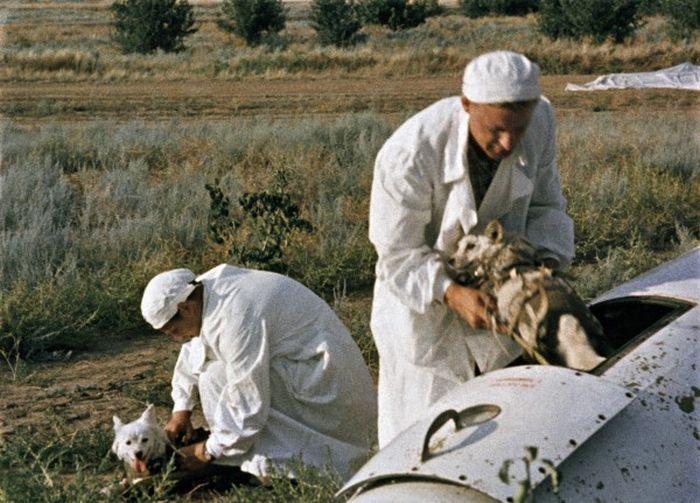
Collectively, the Soviet space dogs delivered one of the most remarkable and essential chapters in the history of science and exploration. From Laika’s tragic, yet necessary, solo orbital flight to Belka and Strelka’s celebrated return, and the long-duration record set by Ugolyok and Veterok, they provided the fundamental, non-negotiable data on survival, stress, and endurance. Their sacrifices and successes proved that life could withstand the harsh reality of space, transforming humanity’s greatest ambition into a tangible goal. The courage and loyalty of these 18 canines, and the dozens more who were part of the program, are universally acknowledged today, with numerous memorials standing as a humble reminder that the space age was truly a canine one.
These loyal pioneers faced the unknown so that humanity could take its first step. Their courage, often forgotten, is woven into the very fabric of space exploration.
This story Dogs in Space: 10 Canines Who Went Where No Human Had Gone was first published on Daily FETCH


